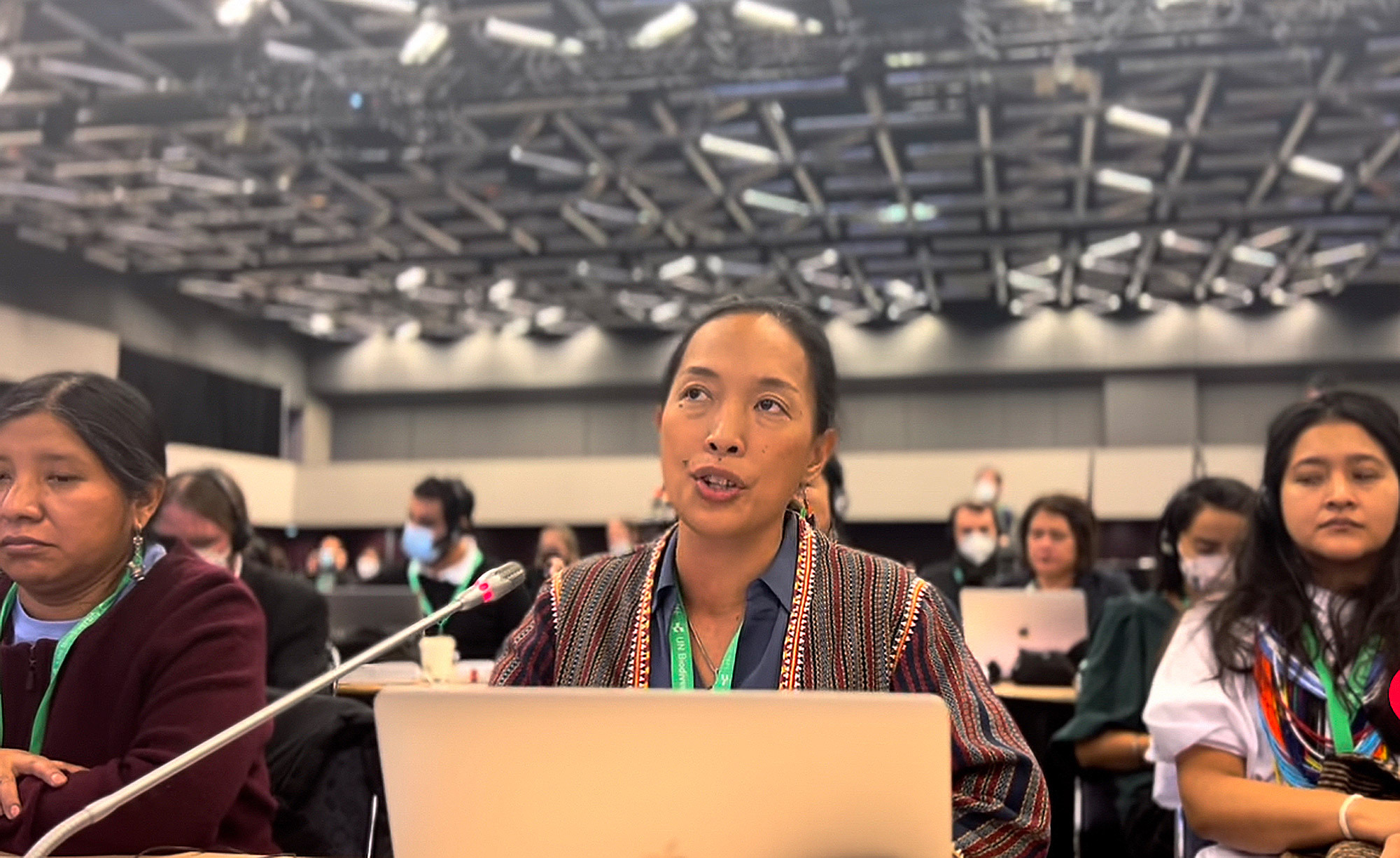In Montreal, the world’s governments agree to a sweeping agreement to protect, conserve, and restore nature
Following a year’s worth of tough negotiations and a tenuous few weeks in Montreal, the UN Convention on Biological Diversity has agreed upon a deal to implement a new Global Biodiversity Framework (Post-2020 GBF). Held at Montreal's Palais des Congrès, representatives of 188 governments on site (95% of all 196 Parties to the UN CBD, plus the United States and The Vatican, who are not official Parties to the convention), finalized and approved measures to stop the ongoing loss of terrestrial and marine biodiversity.
While there was compromise on all sides, the landmark deal is the most comprehensive agreement by the world’s governments to save biodiversity and the ecosystem services upon which the entire world relies, with the aim to set humanity on the path to an “ecological civilization” by mid-century. The Kunming-Montreal Global Biodiversity framework (GBF) has four major goals with 23 targets to achieve by 2030:
Goal A: Reversing Biodiversity Extinction
The integrity, connectivity and resilience of all ecosystems are maintained, enhanced, or restored, substantially increasing the area of natural ecosystems by 2050; Human induced extinction of known threatened species is halted, and, by 2050, extinction rate and risk of all species are reduced tenfold, and the abundance of native wild species is increased to healthy and resilient levels.
Goal B: Enhancing Ecosystem Services
Biodiversity is sustainably used and managed and nature’s contributions to people, including ecosystem functions and services, are valued, maintained, and enhanced, with those currently in decline being restored, supporting the achievement of sustainable development for the benefit of present and future generations by 2050.
Goal C: Sharing Genetic Resources
The monetary and non-monetary benefits from the utilization of genetic resources (and DNA sequencing) are shared fairly and equitably, including with Indigenous peoples and local communities, ensuring traditional knowledge associated with plants and animals is protected.
Goal D: Scaling Implementation
Adequate means of implementation, including financial resources, capacity-building, technical and scientific cooperation, and access to and transfer of technology to fully implement the Kunming-Montreal Global Biodiversity Framework are secured and equitably accessible to all Parties, especially developing countries, in particular the least developed countries and small island developing States, closing the biodiversity finance gap of $700 billion per year ($200B in direct finance plus $500B in avoided harmful subsidies).

Jing Corpuz, IIFB, reading a statement on behalf of Indigenous peoples regarding Target 3 of the UN Global Biodiversity Framework: Credit: IIFP
The Framework has 23 specific targets to help achieve the above four major goals. Here is a topline summary for each of the targets:
- Target 1: Reduce to near zero the loss of areas of high biodiversity importance and ecological integrity with inclusive spatial planning of all lands and seas;
- Target 2: Have restoration completed or underway on at least 30% of degraded terrestrial, inland waters, and coastal and marine ecosystems;
- Target 3: Protect and conserve at least 30% of the world's islands, inland waters, coastal areas, and oceans, with emphasis on areas of particular importance for biodiversity and ecosystem services;
- Target 4: Halt human-induced extinction of known threatened species and effectively manage human-wildlife interactions to minimize human-wildlife conflict for coexistence;
- Target 5: Employ sustainable, safe, and legal use of wild species to prevent overexploitation of ecosystems, reducing the risk of pathogen spill-over while protecting customary sustainable use by Indigenous peoples and local communities (IPLCs);
- Target 6: Prevent the introduction of invasive alien species, reduce by at least half the introduction of potentially invasive species, and eradicate invasive alien species on islands and other priority sites;
- Target 7: Reduce by half both excess nutrient fertilizers and the overall risk posed by pesticides and highly hazardous chemicals;
- Target 8: Minimize the impact of climate change and ocean acidification on biodiversity and increase its resilience through mitigation, adaptation, and disaster risk reduction actions, including through nature-based solution and/or ecosystem-based approaches;
- Target 9: Ensure that the management and use of wild species are sustainable, thereby providing social, economic, and environmental benefits for people, especially those in vulnerable situations and those most dependent on biodiversity;
- Target 10: Manage agriculture, aquaculture, fisheries, and forests sustainably through the use of biodiversity-friendly practices that contribute to the resilience of long-term efficiency and productivity of production systems;
- Target 11: Restore, maintain and enhance nature’s contributions to people, including ecosystem functions and services, through nature-based solutions and ecosystem-based approaches for the benefit of all people and nature;
- Target 12: Significantly increase the area and quality and connectivity of, access to, and benefits from green and blue spaces in urban and densely populated areas sustainably by mainstreaming the conservation and sustainable use of biodiversity;
- Target 13: Take effective measures to ensure the fair and equitable sharing of benefits that arise from genetic resources and digital sequence information, as well as traditional knowledge associated with genetic resources;
- Target 14: Raise international financial flows from developed to developing countries, in particular, least developed countries, small island developing States, and countries with economies in transition, to at least US$ 30 billion per year by 2030;
- Target 15: Require large and transnational companies and financial institutions to monitor, assess, and transparently disclose their risks, dependencies, and impacts on biodiversity through their operations, supply and value chains, and portfolios;
- Target 16: Reduce the global footprint of consumption in an equitable manner, halving global food waste, significantly reduce overconsumption, and substantially reduce waste generation by 2030;
- Target 17: Establish, strengthen capacity for, and implement in all countries in biosafety measures and measures for the handling of biotechnology and distribution of its benefits;
- Target 18: Progressively phase out subsidies that harm biodiversity by at least $500 billion per year by 2030 while scaling up positive incentives for biodiversity’s conservation and sustainable use;
- Target 19: Mobilize by 2030 at least $200 billion per year in domestic and international biodiversity-related funding from all sources – public and private;
- Target 20: Strengthen capacity-building and technical and scientific cooperation, including through South-South, North-South, and triangular cooperation, to meet the needs for effective implementation of the GBF, particularly in developing countries;
- Target 21: Ensure that the best available data, information, and knowledge, are accessible to decision makers, practitioners, and the public to guide effective and equitable governance, including IPLC practices with their free, prior and informed consent;
- Target 22: Ensure the full, equitable, inclusive, effective, and gender-responsive representation and participation in decision-making and access to justice and information related to biodiversity by IPLCs;
- Target 23: Ensure gender equality in the implementation of the framework through a gender-responsive approach where all women and girls have equal opportunity and capacity to contribute to the three objectives of the Convention.
.jpg)
Image credit: James Donaldson
Overall the Kunming-Montreal agreement should be lauded as a huge milestone in human history. Never has a UN text with so much “bracketed” text (i.e. text placed in draft form for future consideration) been worked through in the span of two short weeks. And this collective agreement, while containing a lot of compromises, delivers a lot of firsts:
- A call for integrated spatial planning for the whole Earth
- A ramp-up to protect and conserve at least 30% of lands and oceans in 8 years
- A target for full disclosure by the private sector on their nature impacts
- A ramp-up of global finance for biodiversity to $200B per year
- A full phase-out of harmful subsidies, especially in agriculture, fisheries, and timber
- A recognition of the rights of Indigenous peoples to their territories
- A recognition of the interconnectedness between biodiversity and climate change
- A special trust fund to ensure the implementation of the GBF
There is much more in the document.. the CBD secretariat has a good summary (PDF). This important agreement will set a solid footing to begin the long process to align the world’s governments, civil society organizations, and the private sector – companies, investors, data providers – around a central vision to become nature-positive within a decade. It is the beginning, and we will have a lot of work ahead in the next few years.
First and foremost is the need to elevate the self-determined role of Indigenous peoples in conserving most of the world’s biodiversity and to ensure that finance flows efficiently to the communities on the ground doing the most work to preserve our priceless ecosystems. A key part of this goal will involve recognizing the call by hundreds of Indigenous groups and civil society organizations to protect, conserve and restore 50% of the world’s land and oceans.




